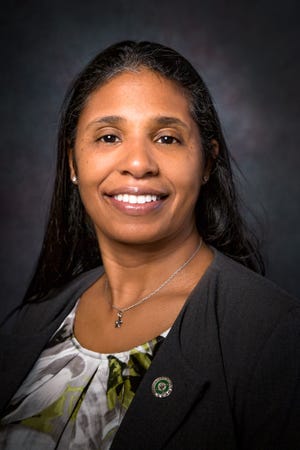Bragg Stadium could be getting some local financial help to transition from old to new.
Members of the Blueprint Intergovernmental Agency on Thursday voted 11-1, with Leon County Commissioner David O’Keefe dissenting, to seek funding for Florida A&M’s Bragg Stadium renovations through the Office of Economic Vitality rather than with Blueprint funds.
While O’Keefe cited how he was “uncomfortable in using sales tax dollars on college athletics,” other board members pointed to the importance of FAMU in the community as a reason to fund the project.
The money is planned to be used for Phase 3 of Bragg Stadium renovations, which includes new bathrooms, concession stands, elevators and lighting.

Last September, FAMU President Larry Robinson requested $15 million in the form of a letter to Leon County Commissioner Carolyn Cummings. The request came after the university was granted $10 million of taxpayer dollars from Blueprint three years prior.
The university has already put $18 million into their renovations, which began in 2021 The other $8 million came from the university’s own funding into their project. Phases 1 and 2, which involved improvements of both the west and east stands, have already been completed.
Bragg Stadium is ‘iconic venue,’ FAMU President Larry Robinson says
In the letter, Robinson described Bragg Stadium as an “iconic venue which contributes greatly to the culture of the ‘south side’ and has economic impacts throughout Leon County.”
Specifically, “we are in need of an additional $15,000,000 from Blueprint’s infrastructure funds to enhance some of the health and safety aspects of this community asset,” Robinson said in the letter.

Dr. Shawnta Friday-Stroud, vice president for university advancement for FAMU, represented the university at the meeting and thanked Blueprint members for the original $10 million — but told the board to look towards the future.
“Just think of what more we could generate that could go to helping things like affordable housing and many of the other initiatives here,” Friday-Stroud said.
Autumn Calder, Blueprint’s director, advised members that the recommendation from staff not to fund the university’s request. The reason: There are no additional funds, within Blueprint infrastructure dollars, that could go towards the project.
Tallahassee Mayor John Dailey agreed with not using Blueprint money but told board members the funding could come from somewhere else: “I am still not convinced that this should not come back at the main meeting as an economic development project,” Dailey said. “It will give our team the direction to think creatively through financing.”
Bragg Stadium events bring money to area, official said
City Commissioner Dianne Williams-Cox proposed the motion to look into OEV funding for Bragg Stadium. An alumni of FAMU, she was one of several Blueprint members to support funding the original $10 million.
“Just like Florida State, those dollars will come back to this community through the tax that will be collected because of what is going to be spent here,” she said.
Two years ago, Blueprint voted to give FSU’s Doak Campbell Stadium $27 million in funding, and that money would also come from the Office of Economic Vitality.
Leon County Commissioner Rick Minor and O’Keefe shared their concerns about funding the project but County Commissioner Bill Proctor also agreed on the importance of Bragg to the community.
“In December, we held at Bragg Stadium the Florida High School Athletic Association football state championships,” Proctor said. “That was $11 million to our community … $11 million in terms of what happened as a result of Bragg Stadium. We should make this facility tight and right.”
The next Blueprint meeting is planned for May 16.
Arianna Otero is the City Solutions Reporter for the Tallahassee Democrat. Contact her via email at [email protected] or on Twitter/X: @ari_v_otero.














